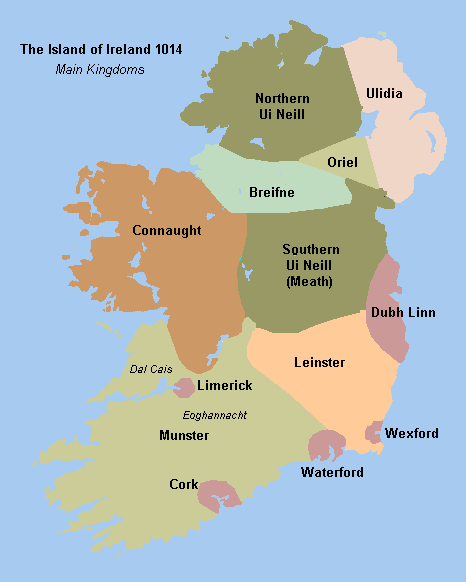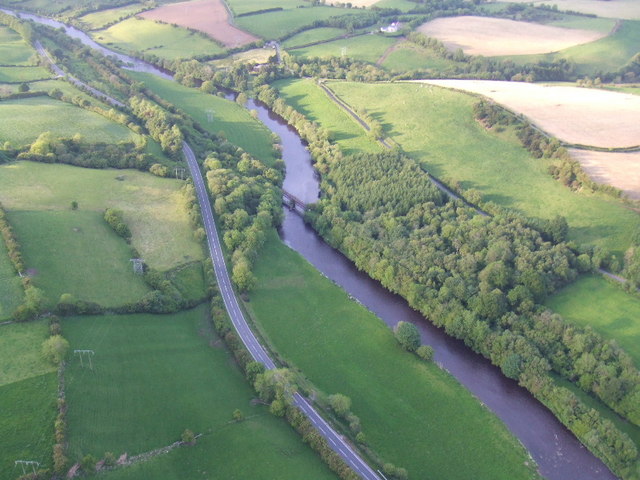|
Bhotha Mhuintir Uí Fhialáin
The Bhotha Mhuintir Uí Fhialáin (huts of the people of O'Phelan) were an Irish tribe that lived in the area now known as Boho in County Fermanagh, Northern Ireland. Etymology This area is also referred to as ''Bothach Ui Fhialain'' in Breifne or ''mBothaigh I Fhialain'' in other texts. History of the Uí Fhialáin Throughout medieval history there have been multiple references to the clan of ''Muintire Fialain'' although it is difficult to ascertain exactly when they first emerged due to the diversity of name spellings. Some historians relate this name to Felan or Faolan, which is the diminutive name for wolf. There were seven tuaths in the time when the Maguire ruled Fermanagh. Amongst these is a reference to Flanagan (O Flannagain) who was the chief of Tuath Ratha (larger than the present area of the barony of Magheraboy) and another reference to MacLinnen or Leonard (MacGiolla Fheinnéin) over ''Munter Fodaghan/Muintear Fhoeadachain/Fhuadacháin/Muintir Phaeodachain ' ... [...More Info...] [...Related Items...] OR: [Wikipedia] [Google] [Baidu] |
Irish People
The Irish ( or ''Na hÉireannaigh'') are an ethnic group and nation native to the island of Ireland, who share a common ancestry, history and Culture of Ireland, culture. There have been humans in Ireland for about 33,000 years, and it has been continually inhabited for more than 10,000 years (see Prehistoric Ireland). For most of Ireland's recorded history, the Irish have been primarily a Gaels, Gaelic people (see Gaelic Ireland). From the 9th century, small numbers of Vikings settled in Ireland, becoming the Norse-Gaels. Anglo-Normans also Norman invasion of Ireland, conquered parts of Ireland in the 12th century, while Kingdom of England, England's 16th/17th century Tudor conquest of Ireland, conquest and Plantations of Ireland, colonisation of Ireland brought many English people, English and Scottish Lowlands, Lowland Scottish people, Scots to parts of the island, especially the north. Today, Ireland is made up of the Republic of Ireland (officially called Republic of Irela ... [...More Info...] [...Related Items...] OR: [Wikipedia] [Google] [Baidu] |
Boho, County Fermanagh
Boho (pronounced , ) is a hamlet and a civil parish covering approximately southwest of Enniskillen in County Fermanagh, Northern Ireland. It is situated within Fermanagh and Omagh district. This area contains a high density of historically significant sites stretching from the Neolithic Reyfad Stones, through the Bronze Age/Iron Age (Aghnaglack Tomb) and medieval (High Crosses) to comparatively recent historical buildings such as the Linnett Inn. Boho parish has a high biodiversity of flora and fauna due in part to the niches offered by the limestone karst substrata combined with fen meadow, upland heath and acidic bog. The three mountains found within the parish; namely Glenkeel, Knockmore and Belmore provide a landscape varying from high craggy bluffs, with views of neighbouring counties, to low, flat bogland punctuated by streams and lakes. Below this landscape are two of the three most cave-rich mountains in Northern Ireland, featuring the deepest cave system in Ire ... [...More Info...] [...Related Items...] OR: [Wikipedia] [Google] [Baidu] |
County Fermanagh
County Fermanagh ( ; ) is one of the thirty-two counties of Ireland, one of the nine counties of Ulster and one of six counties of Northern Ireland. The county covers an area of and had a population of 63,585 as of 2021. Enniskillen is the county town and largest in both size and population. Fermanagh is one of four counties of Northern Ireland to have a majority of its population from a Catholic background, according to the 2011 census. Geography Fermanagh spans an area of 1,851 km2 (715 sq; mi), accounting for 13.2% of the landmass of Northern Ireland. Nearly a third of the county is covered by lakes and waterways, including Upper and Lower Lough Erne and the River Erne. Forests cover 14% of the landmass (42,000 hectares). It is the only county in Northern Ireland that does not border Lough Neagh. The county has three prominent upland areas: * the expansive West Fermanagh Scarplands to the southwest of Lough Erne, which rise to about 350m, * the Sl ... [...More Info...] [...Related Items...] OR: [Wikipedia] [Google] [Baidu] |
Northern Ireland
Northern Ireland ( ; ) is a Countries of the United Kingdom, part of the United Kingdom in the north-east of the island of Ireland. It has been #Descriptions, variously described as a country, province or region. Northern Ireland shares Republic of Ireland–United Kingdom border, an open border to the south and west with the Republic of Ireland. At the 2021 United Kingdom census, 2021 census, its population was 1,903,175, making up around 3% of the Demographics of the United Kingdom#Population, UK's population and 27% of the population on the island of Ireland#Demographics, Ireland. The Northern Ireland Assembly, established by the Northern Ireland Act 1998, holds responsibility for a range of Devolution, devolved policy matters, while other areas are reserved for the Government of the United Kingdom, UK Government. The government of Northern Ireland cooperates with the government of Ireland in several areas under the terms of the Good Friday Agreement. The Republic of Ireland ... [...More Info...] [...Related Items...] OR: [Wikipedia] [Google] [Baidu] |
Kingdom Of Breifne
The Kingdom of Breifne or Bréifne (), anglicized as Breffny, was a medieval overkingdom in Gaelic Ireland. It comprised what is now County Leitrim, County Cavan and parts of neighbouring counties, and corresponds roughly to the Roman Catholic Diocese of Kilmore. It had emerged by the 10th century, as a confederation of ' headed by an overking drawn from the Uí Briúin Bréifne. By the 11th century, Bréifne was ruled by the Ua Ruairc (O'Rourke) dynasty. The kingdom reached the height of its power in the 12th century, under Tigernán Ua Ruairc. During the latter part of his reign, Bréifne took part in campaigns against the Norman invasion of Ireland. His assassination by the Anglo-Normans in 1172 was followed by a succession dispute, and a conflict between the Ua Ruairc and Ua Raghallaigh (O'Reilly) dynasties. Following the Battle of Magh Slecht in 1256, Bréifne split into West Breifne (ruled by the Ua Ruairc) and East Breifne (ruled by the Ua Raghallaigh). Bréifn ... [...More Info...] [...Related Items...] OR: [Wikipedia] [Google] [Baidu] |
Felan
Phelan is an Irish name, Irish surname, one of the two most common anglicisations (the other being Whelan) of the Irish surname Ó Faoláin (which comes from the Irish language, Irish for "wolf"). The name is commonly seen in the south-east of Ireland, particularly counties County Waterford, Waterford and County Kilkenny, Kilkenny. Other anglicised forms include Felan and Faelan. One anglicized pronunciation is , but in some parts of Kilkenny there is also use of (as , the Irish original form, is pronounced ) or even (because the name has the same origin as Whelan). Origins in Ireland The O'Faelan (O'Harts spelling) clan name is claimed to have descended from Dal Fiachrach Suighe, Fiacha Suidhe, one of the younger brothers of Conn Ceadcathach or Conn of the Hundred Battles. Fiacha Suidhe is said to have been expelled from County Meath, Meath and after various wanderings was given permission to settle in lands around Waterford which were called the Déisi, Desies. This origin ... [...More Info...] [...Related Items...] OR: [Wikipedia] [Google] [Baidu] |
County Tyrone
County Tyrone (; ) is one of the six counties of Northern Ireland, one of the nine counties of Ulster and one of the thirty-two traditional counties of Ireland. Its county town is Omagh. Adjoined to the south-west shore of Lough Neagh, the county covers an area of , making it the largest of Northern Ireland's six counties by size, and the second largest county in Ulster after Donegal. With a population of 188,383 as of the 2021 census, Tyrone is the 5th most populous county in both Northern Ireland and Ulster, and the 11th most populous county on the island of Ireland. The county derives its name and general geographic location from Tír Eoghain, a Gaelic kingdom under the O'Neill dynasty which existed until the 17th century. Name The name ''Tyrone'' is derived from the Irish , meaning 'land of Eoghan', the name given to the conquests made by the from the provinces of and Ulaid. Historically, it was anglicised as ''Tirowen'' or ''Tyrowen'', which are closer to the Irish ... [...More Info...] [...Related Items...] OR: [Wikipedia] [Google] [Baidu] |
Cenél Conaill
Cenél is a surname. Notable people with the surname include: *Cenél Conaill, the name of the "kindred" or descendants of Conall Gulban, son of Niall Noígiallach defined by oral and recorded history *Cenél nEógain (in English, Cenel Eogan) is the name of the "kindred" or descendants of Eógan mac Néill, son of Niall Noígiallach who founded the kingdom of Tír Eógain in the 5th century *Kin groups forming part of Dal Riata, most of which, after a varied evolution eventually became the Scottish region of Argyll **Cenél nÓengusa, a kin group who ruled the island of Islay, and perhaps nearby Colonsay. After spending 4 centuries Scandinavian Scotland, as part of Norway, and another 4 as part of the quasi-independent Lord of the Isles, Lordship of the Isles, this region became Scottish in the late 15th century. ** Cenél nGabráin, the "kindred" of Gabrán, who ruled Kintyre, Knapdale (at that time including the lands between Loch Awe and Loch Fyne - Craignish, Ardscotnish, River ... [...More Info...] [...Related Items...] OR: [Wikipedia] [Google] [Baidu] |
Ollam
An or ollamh (; anglicised as ollave or ollav), plural ollomain, in early Irish literature, was a master in a particular trade or skill. Bard Generally, ''ollam'' referred to a professional poet or bard of literature and history, and a member of the highest of the seven ranks of filí, achieved after at least twelve years of study, As part of a king's court, the ollam might combine the functions of poet, story-teller, and historian, including an accurate recitation of genealogies. The calling to the vocation was usually a family tradition. As early as 574, members of the Ó hUiginn ( O'Higgins) clan were recorded as hereditary poets in the courts of Irish Princes and Chiefs. As such they were accorded a status of nobility second in rank only to the King and were entitled to wear the same number of colours in their robes. Other uses The term was also used to refer to the highest member of any group; thus an ''ollam brithem'' would be the highest rank of judge, and an ''oll ... [...More Info...] [...Related Items...] OR: [Wikipedia] [Google] [Baidu] |
Erenagh
The medieval Irish office of erenagh (Old Irish: ''airchinnech'', Modern Irish: ''airchinneach'', Latin: '' princeps'') was responsible for receiving parish revenue from tithes and rents, building and maintaining church property and overseeing the termonn lands that generated parish income. Thus he had a prebendary A prebendary is a member of the Catholic Church, Catholic or Anglicanism , Anglican clergy, a form of canon (priest) , canon with a role in the administration of a cathedral or collegiate church. When attending services, prebendaries sit in part ... role. The erenagh originally had a tonsure but took no other holy orders; he had a voice in the Chapter when they consulted about revenues, paid a yearly rent to the Bishop and a fine on the marriage of each daughter. The role usually passed down from generation to generation in certain families in each parish. After the Reformation and the Dissolution of the Monasteries the role of erenagh became subsumed in the res ... [...More Info...] [...Related Items...] OR: [Wikipedia] [Google] [Baidu] |




